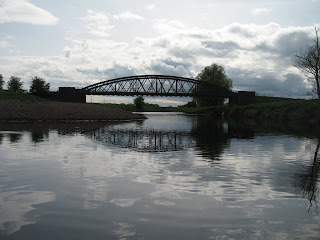Mon cher Ramsay,
Très étonnant... pour rester poli !
Si cela peut aider votre action, je vous autorise pleinement à diffuser ce qui suit, que ce soit en français ou après l'avoir traduit en anglais (dans ce cas après relecture par moi).
Il n'existe dans le monde que deux espèces :
- Castor canadensis, néarctique ;
- Castor fiber paléarctique (Eurasie : absent en Afrique du Nord).
Sauf découvertes récentes, que j'ignorerais, bien sûr.
A la réserve ci-dessus près, opposer un prétendu Castor de Norvège à un Castor d'Eurasie est de l'incompétence taxonomique
C'est aussi une impropriété linguistique : la Norvège serait-elle hors d'Eurasie?
Jusqu'à il y a une douzaine de milliers d'années, l'Ecosse et la Norvège étaient sous la glace, donc le Castor ne vivait que plus au sud.
C'st à partir de ces populations méridionale que l'espèce a reconquis les régions se libérant de glace, jusqu'à la Scandinavie et jusqu'à la Grande-Bretagne.
Certes, des Insectes avec de nombreuses générations par an peuvent différencier des sous-espèces dans la période écoulée depuis la fin de la dernière glaciation.
Mais c'est extrêmement douteux une espèce adulte à quelques années et ne faisant qu'une seule portée par an, d'effectifs réduits.
Il est très possible, néanmoins, qu'on mette en évidence des différences de fréquence d'allèles entre les Castor fiber de diverses régions d'Europe.
En effet quand, comme Castor fiber en Europe, une espèce naguère très répandue sur une aire continue a été réduite à des populations disjointes d'effectifs très faibles, des allèles sont nécessairement perdus par chacune d'elles.
Etil n'y aucune raison que le hasard fasse que ce soit les mêmes qui survivent partout.
Phénomène de dérive génétique par goulot d'étranglement : un grand classique de la génétique des populations, bien connu des étudiants, voire des lycéens.
Il est très douteux, chez une espèce au comportement individuel aussi souple et adaptable, que des différences allèliques éventuelles puissent déterminer des différence éco-éthologiques entre populations de Castor fiber.
Eexemple : en Europe du sud, l'espèce près du gîte, des provisions en fait d'été pour l'hiver. Des individus capturés en France méditerranéenne et se comportant ainsi, relâchés dans des contrées aux hivers plus rude, ont presque aussitôt adopté la manière de vivre "nordique", avec toujours le même génome !
Telle que j'ai pu la lire évoquée sur le site Beavers at Bamff, la position de Scottish Natural Heritage relative aux Castor fiber en Ecosse, si elle ne révèle pas une volonté politique inavouée d'empêcher le retour de l'espèce, prouve une grande incompétence concernant sa biologie.
Jean-Pierre Choisy
Parc Naturel Régional du Vercors,
Biologiste, chargé de mission Faune
PS En 2009, ici, dans les Préalpes du sud, une personne a détruit un barrage de Castor vieux de plus dix ans, sur un site dont l'espèce a, par ses travaux, fortement restauré la biodiversité. Informés, les gardes de l'Office National de la Chasse et de la Faune Sauvage ont dressé procès-verbal, comme ils l'auraient fait pour destruction d'un nid d'oiseau d'espèce protégée, même sans tir de ceux-ci.'
I intend to translate M.Choisy's remarks and post them here again with his approval, but thought that those of you who speak French would like to read what this eminent ecologist thought of SNH's standpoint on the question of the provenance of beavers that have returned to this country.






































